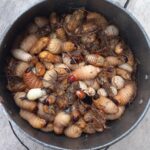Rock snails of the genus Cyclophorus are highly sought-after wild foods in rocky limestone mountain areas of Vietnam. These snails are not only regarded as food but also as medicine against various ailments. The local Vietnamese name is Ốc thuốc, but they are also called Ốc núi in parts of the country. English common names vary from Rock snail to Mountain snail to Stone snail. Whatever it is, there are many Cyclophorus spp., of which about 870 species are known worldwide. In South Asia, Southeast Asia, and the Far East, 100 species are currently known to science. An overview of these Asian species can be found here.
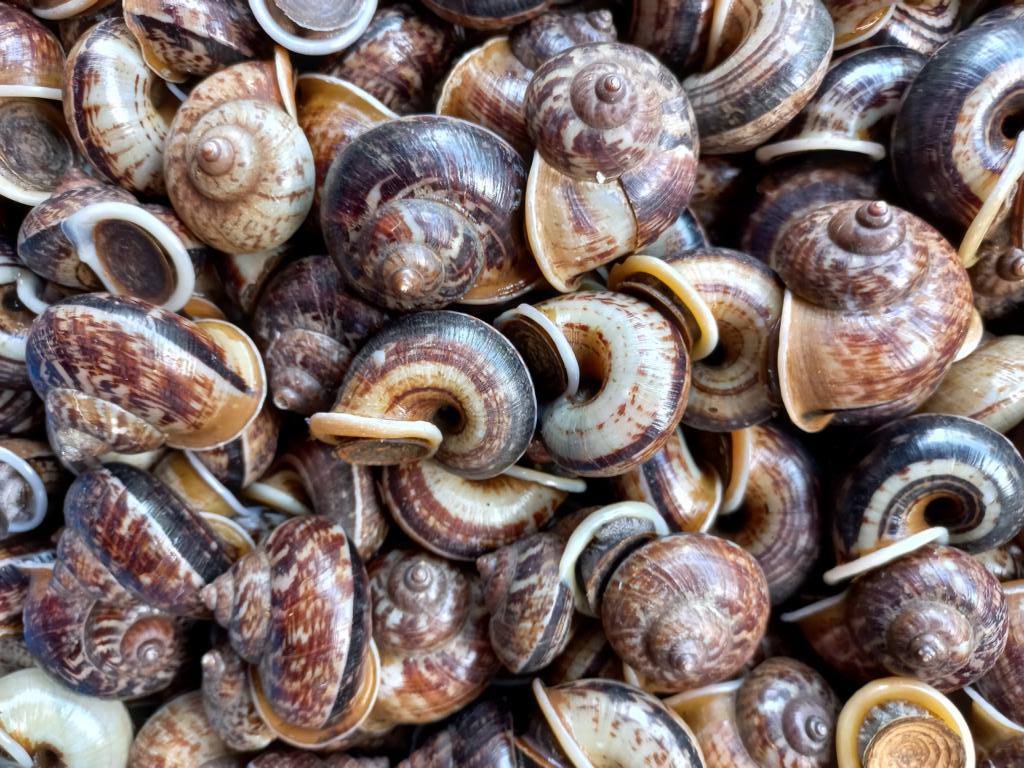
Description of Rock snails
Rock snails have diameters from 4-6 cm / 1.6-2.4’’ and show a flat body whorl and a strongly developed shell lip. Coloration varies according to the species but is primarily brown and often striped or speckled. The lip is nearly always white; frequently, there is a broad, white stripe from the umbilicus to the shell lip.
Rock snail habitats and habits
As the name implies, rock snails prefer to live in rocky and wet habitats. These habitats are found within the picturesque limestone mountains in some northern and southern Vietnam areas.
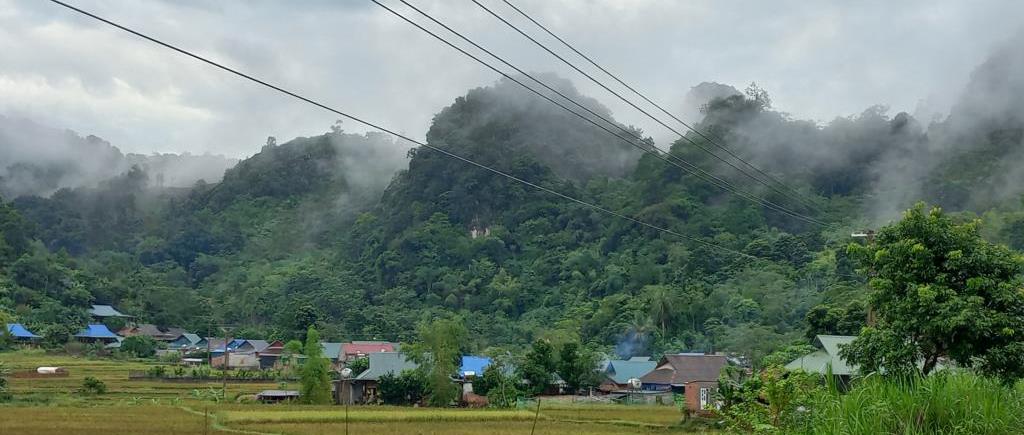
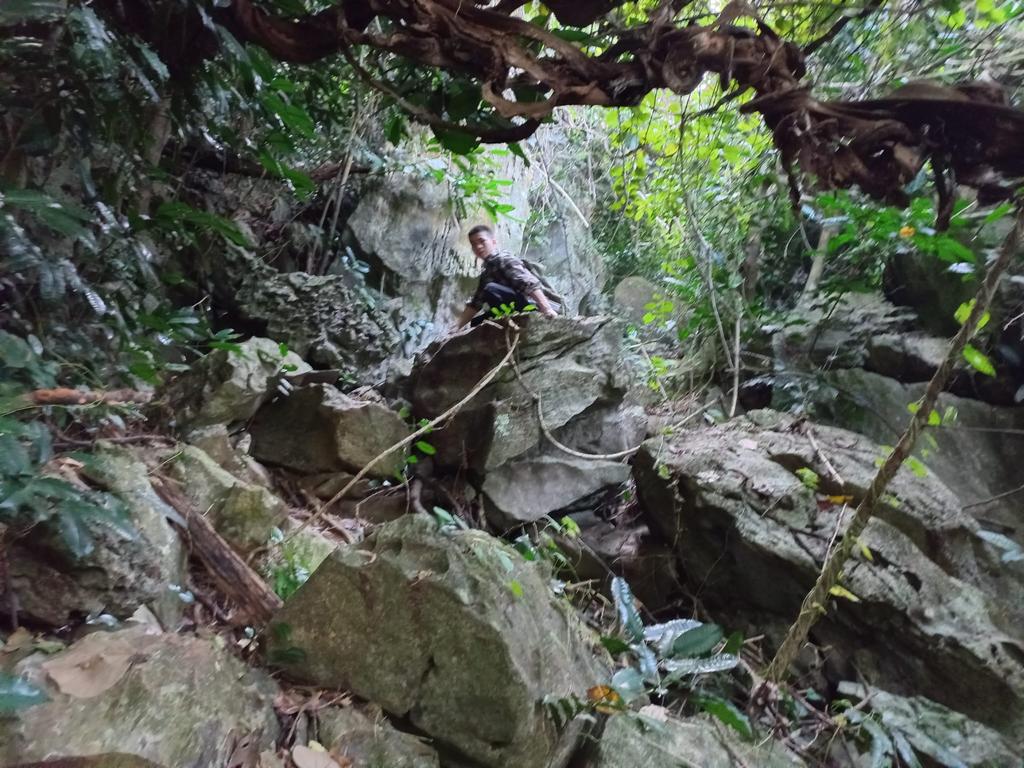
Cyclophorus snails are most active in the warm and rainy seasons from April to September. At the end of September/beginning of October 2023, we still had some rain, and the rock snails were active in the central northern region around Tân Trào, 40 km from Tuyên Quang Town, about 200 km north of Hanoi. Rock snails lay their eggs and reproduce during this warm and wet period. The remaining year, they hide in rock crevices or thick layers of leaves.
Catching Rock snails

Although rock snails are primarily diurnal, they will also move around at night. This genus of snails is terrestrial; they like to be near mountain streams and fast-running water, which provide bare stones and rocks for holding their clutches of eggs. Moreover, they always avoid mossy or other vegetated rocks.
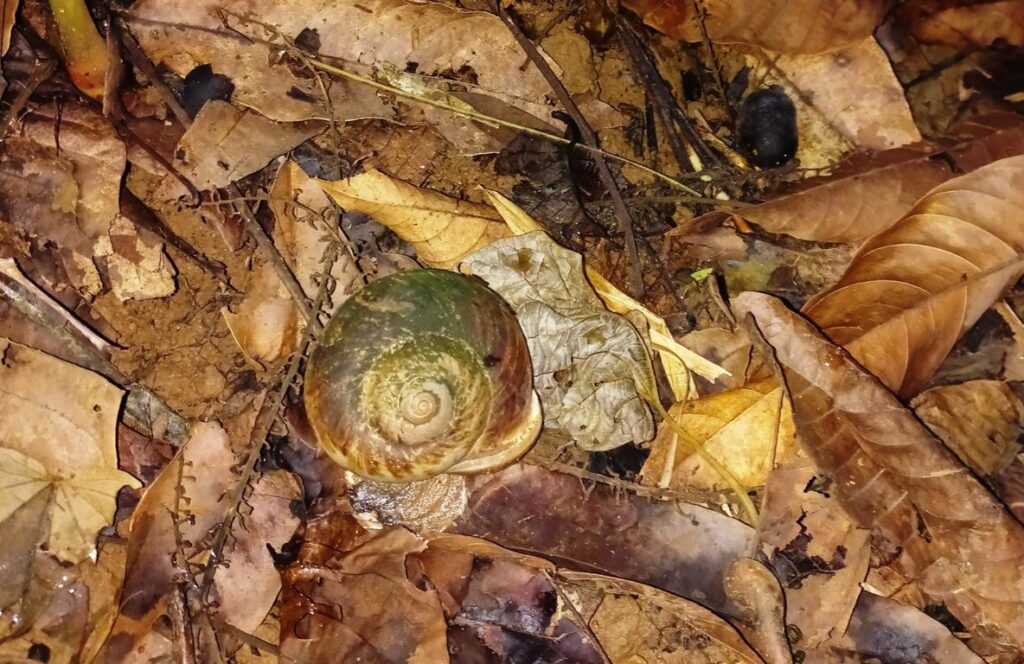
Therefore, when out in the hills to catch rock snails on the forest floor at night, it is also perfectly appropriate to catch mountain crabs (Brachyuran sp.) in the nearby wild-flowing waters. Both species are found in the same general habitat and even complement each other in taste and texture when eaten.
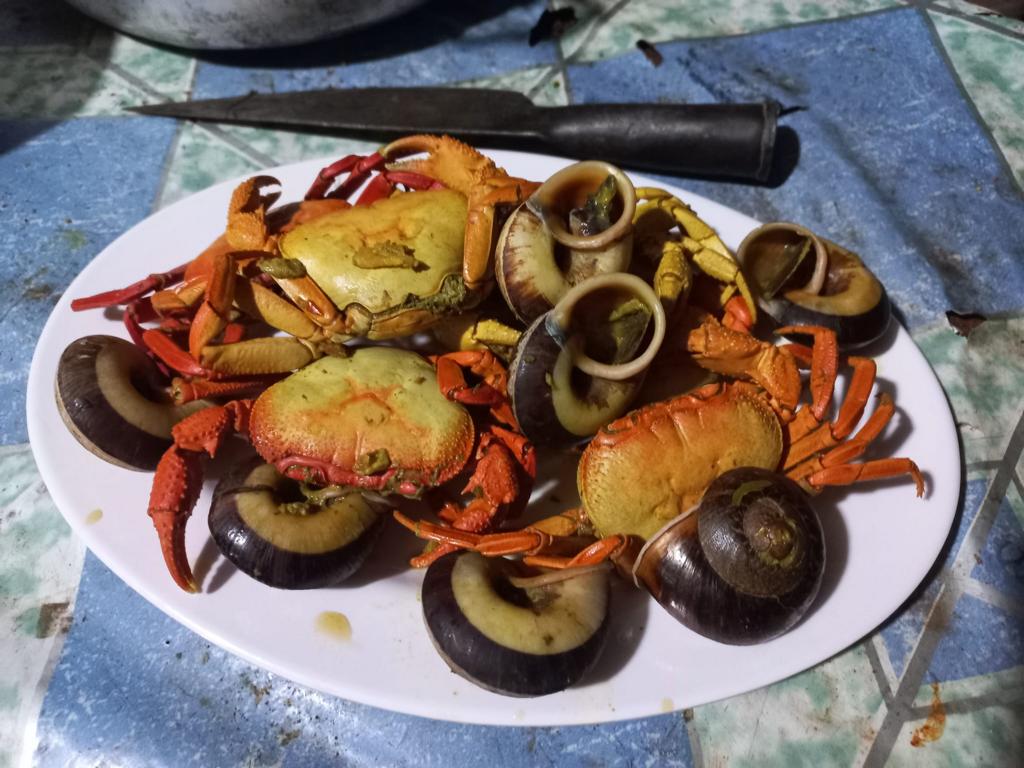
Why are locals so eager to eat Rock snails caught in the wild?
Cyclophorus snails avoid eating foul or rotting vegetation and only feed on fresh weeds and herbs. One of their favorite food weeds is stinging nettle (Urtica dioica), which many Vietnamese consider a precious medical plant. Another one is the wild tobacco plant (Nicotiana tabacum), which gives the snails a much-liked, slightly bitter aroma. Therefore, the stomach sac of the snails is full of herbs and weeds. Vietnamese people consider this content medically important and like to eat the whole snail, including its stomach and other intestines. Farm-raised rock snails are not appreciated, as these are not feeding on such herbs but are getting fed with vegetables or farmed weeds.
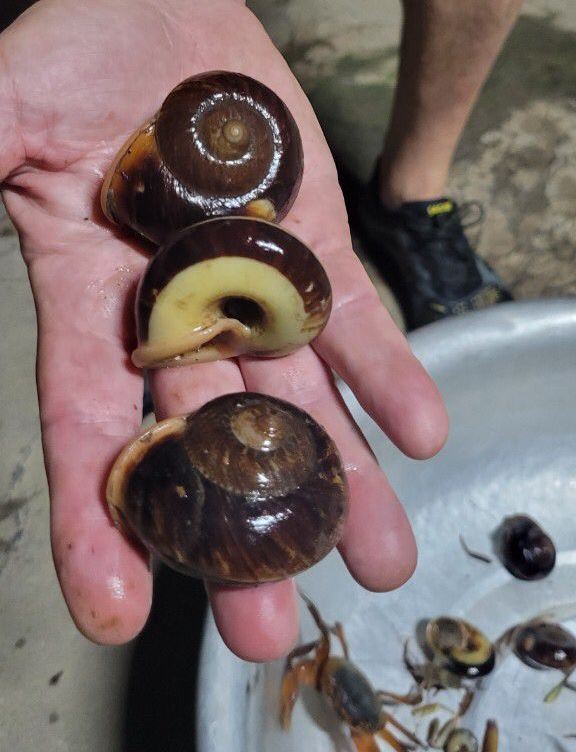
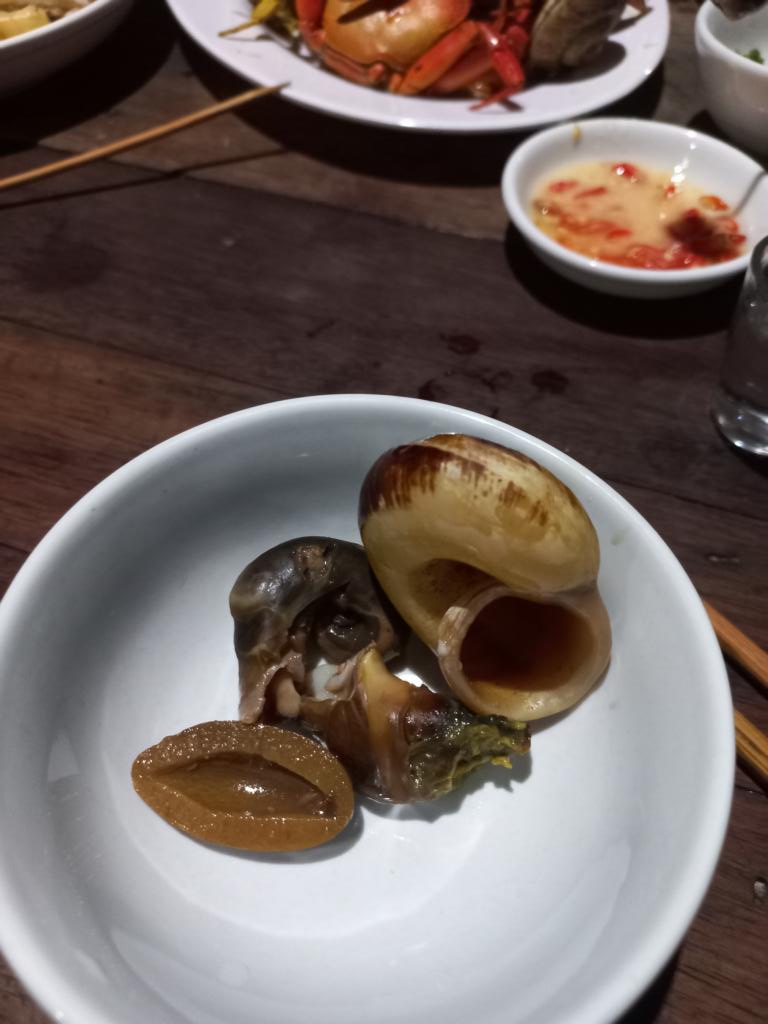
How to cook and eat them?
After being caught, the snails are briefly washed in water and steamed together with the omnipresent mountain crabs. The whole body, including the stomach and intestines, is pulled from the shell in a half-spiral movement. Everything of the snail (without shell 😊) is eaten with a dip of chilies, salt, and lemon juice. My favorite side vegetable is pickled olives, washed with a big gulp of country liquor.

When out in the forest, rock snails are put into the embers or hot ashes to cook thoroughly before eating.
There are many other recipes for more sophisticated cooking of these snails. Most recipes add lemon grass when steaming to reduce any smell or taste of mud.
Health benefits of Rock snails
Most Vietnamese people genuinely believe in the following health effects of eating rock snails:
- Its meat nourishes the body.
- Eating snail meat increases the libido even more than sea oyster meat.
- Rock snails produce a lot of mucus in their bodies, which people believe reduces bone and joint pain, supplements joint fluid to improve dry joints, and reduces knee joint crackle.
- Rock snail meat and stomachs will enhance digestion and treat digestive system diseases.
All these perceived health benefits have not been scientifically proven and are only stated to complement the topic.
Lessons learned from edible Rock snails in limestone areas of Vietnam:
- In Asia, at least 100 different species of Cyclophorus snail exist.
- These snails prefer habitats on land next to wild-running waters.
- Cyclophorus snails feed on fresh weeds and herbs.
- Locals eat these snails not only for their nutritional- but also for health benefits.
.



